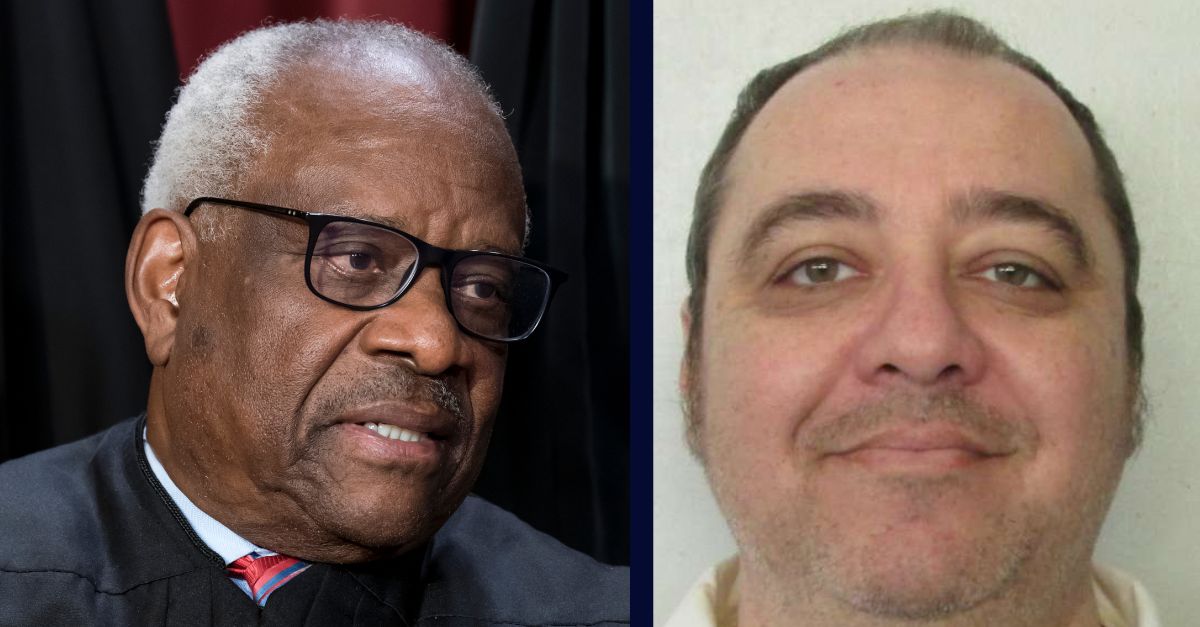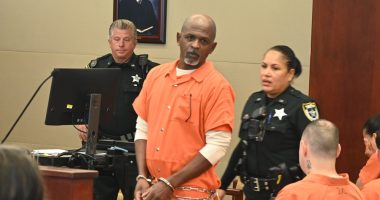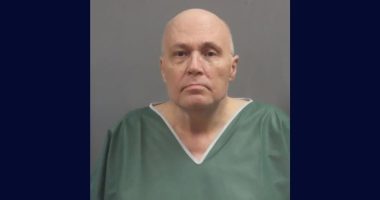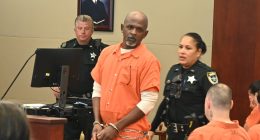
Left: Associate Supreme Court Justice Clarence Thomas (AP Photo/J. Scott Applewhite). Right: This undated photo provided by Alabama Department of Corrections shows inmate Kenneth Eugene Smith, who was convicted in a 1988 murder-for-hire slaying of a preacher’s wife. (Alabama Department of Corrections via AP).
A death row inmate in Alabama says he should not be put to death via an “experimental” execution method — despite arguing in favor of that very method in prior court proceedings. His strongest legal argument may lie in words uttered earlier in his case by U.S. Supreme Court Justice Clarence Thomas.
Kenneth Eugene Smith was sentenced to death in 2022 for the 1988 contract killing of Elizabeth Dorlene Sennett, a 45-year-old minister’s wife and grandmother. Smith’s execution by lethal injection was set for November 17, 2022.
However, Smith appealed and argued that an alternative method of execution — inhalation of pure nitrogen, known as “nitrogen hypoxia” — would be less painful than lethal injection. Smith’s appeal pointed to Alabama’s history of bungled executions with other inmates, particularly at the point of accessing veins to insert intravenous lines.
Smith lost at the district court level, but the U.S. Court of Appeals for the 11th Circuit reversed and put Smith’s execution on hold. The Supreme Court granted review of Alabama’s appeal and dissolved the stay, clearing the way for Smith’s execution. However, the timing was problematic, and Smith’s death warrant expired.
The U.S. Supreme Court ultimately denied further review of Alabama’s appeal, thereby leaving the 11th Circuit’s ruling in place and keeping Smith’s death sentence on hold pending further proceedings by the lower court.
On Sept. 19, 2023, the district court held a hearing about Smith’s method of execution. During that hearing, Commissioner of Alabama Department of Corrections John Q. Hamm confirmed to the court that Smith would be executed by nitrogen hypoxia.
The court permanently barred the state from executing Smith by lethal injection the following day and warned that, “sanctions will be swift and serious if this injunction is violated.”
Despite Smith having prevailed in choosing nitrogen hypoxia as the method of execution, his lawyers filed an immediate appeal with the Alabama courts on Sept. 20 arguing that their client should not be put to death by that method. In the new filing, Smith said that because the method has never been used before, it would be inappropriate and illegal to subject him to what amounts to an “experimental” execution method.
Read Related Also: ‘Dig your own grave’: Man who allegedly told family he was going to kill his own cousin now charged with murder
Execution by nitrogen hypoxia was authorized by a 2018 Alabama statute, though the state never used or even finalized protocols for using the chemical in an execution. In their recent filing, Smith’s lawyers argued that Alabama has been secretive about how the nitrogen-based execution would work.
His past arguments notwithstanding, Smith’s argument against nitrogen hypoxia may find footing with at least two conservative Supreme Court justices, should the case reach the high bench. During Smith’s earlier appeal in which he argued against lethal injection, Thomas and Justice Samuel Alito dissented and said hypoxia should not be considered a viable alternative method of causing death, because it has never been used and cannot be humanely tested.
Of course, the Thomas and Alito argument against hypoxia was meant as reasoning to support the conclusion that Smith’s challenge to lethal injection should fail. However, Thomas’ reasoning in the earlier case may well support Smith’s current one.
Thomas — a stalwart supporter of the death penalty — called Alabama’s statutory authorization of nitrogen hypoxia “simply irrelevant” to the constitutional question of whether the Eight Amendment requires that the method be considered “available,” and referred to hypoxia as a method that was only slated to become usable in some “indefinite future.”
The liberal justices of the U.S. Supreme Court have been vocal about their disapproval of Alabama’s system of executions generally, regardless of method. In July, Justice Sonia Sotomayor slammed Alabama for conducting a “cursory and largely secret review” of its protocols following several botched executions. Though Alabama’s internal review found “[n]o deficiencies in its protocols,” the justice said the state “never accounted for” the problems with multiple execution.
The justice denounced Alabama’s choice to “experiment again with a human life” by using inmate James Edward Barber as a “guinea pig” for a series of execution protocols that had already raised multiple red flags. According to Sotomayor, Barber was executed by lethal injection “without any evidence about what went wrong and only the State’s word that it has been fixed,” and risking “needless suffering.”
Should Smith’s appeal come before the justices — or perhaps even at an earlier stage in the proceedings — Thomas’ refusal to consider nitrogen hypoxia a serious alternative execution method may well be the lynchpin in a ruling against Smith’s execution altogether. Given that the state is legally prohibited from using lethal injection to put the man to death, it is not clear what alternative, if any, could satisfy Eighth Amendment requirements, which prohibit the use of cruel and unusual punishments.
Alabama is not one of the handful of states that has recently authorized use of firing squads, but it does allow inmates to select electrocution as their method of death. The last inmate to be involuntarily executed via electrocution was Lynda Lyon Block in 2002.
Have a tip we should know? [email protected]








